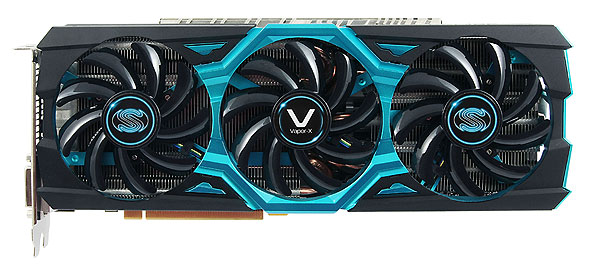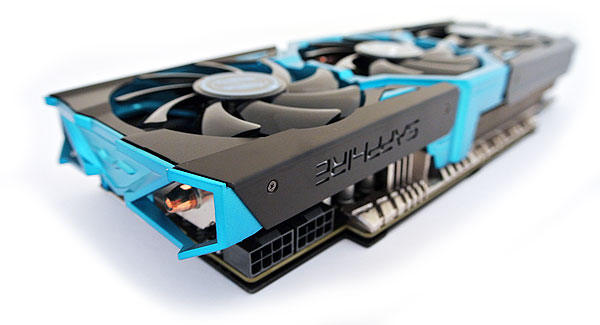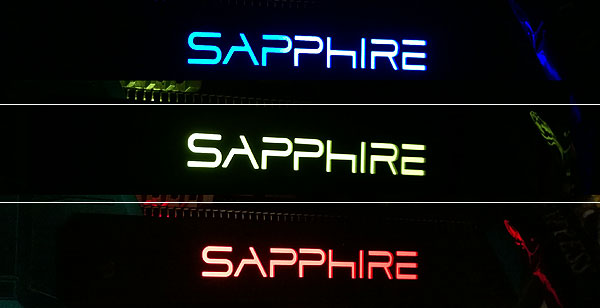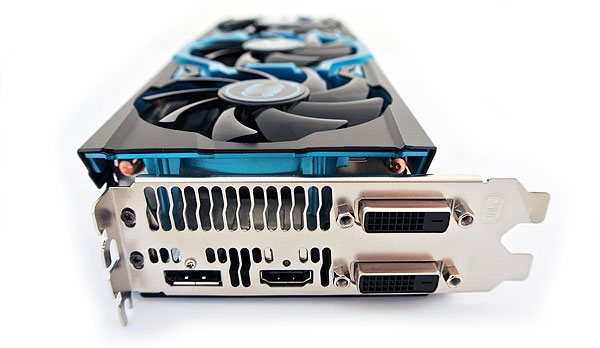Sapphire's Vapor-X R9 290X 8GB: The More, The Merrier?
A Double Helping Of Ram
It's no surprise that Sapphire is bringing an 8GB version of the Radeon R9 290X to market. The company showed off its 8GB Vapor-X and Toxic-branded prototypes of the Radeon R9 290X back in January at CES. If anything, we're surprised it took this long to get here.
Better late than never, though. Today Sapphire introduces its Vapor-X R9 290X 8GB card, a factory overclocked model with twice the amount of RAM found on the reference 290X that was released just over one year ago. A lot has changed in that year, but most importantly Nvidia has launched the similarly-performing $330 GeForce GTX 970, pushing the Radeon R9 290X's original $550 MSRP down to the same range. From a marketing perspective the timing is right for Sapphire to release a 290X with twice the video memory, at a time when the Radeon R9 290X can use an edge against the tough Nvidia competitor.
Having said that, savvy PC enthusiasts know that more RAM doesn't equal more performance in the vast majority of situations. It does allow gamers to select high-resolution texture sets without a penalty, though, and it can make a noticeable difference in some game titles at very high resolutions such as 2560x1440 and beyond. In an age where 4K monitors are becoming more common, 8GB of graphics memory has never been more apropos.
One look at the Vapor-X tells you that the company is serious about high-quality materials and good design. The full-height 122mm (4 3/4") PCB is a respectable 280mm (11") long, with the fan shroud extending to 298mm (11 5/8"). It takes up slightly more space than two PCIe slots, with the cooler about 49mm (1 15/16") wide. At 1.27 kg (2 lb 13 oz), it's no lightweight, either.
Sapphire's Vapor-X comes with a 1030 MHz core clock (30 MHz higher than the reference spec), but the memory runs at an impressive 1375 MHz, 125 MHz more than the standard 1250 MHz clock. As we mentioned, the Vapor-X carries 8 GB of the stuff, of course. Sapphire claims to have developed a new VRM engine with digital power control and a 10-phase power delivery system, which you can see on the back of the card. The two thin slits between each bank of five VRMs illuminate during operation, too.
The aluminum fins pull heat away from the cooling block and vapor chamber via two 8mm and two 6mm copper pipes. Three 90mm fans are present, but when the temperature is low only the center fan will spin, reducing its noise footprint. We're not sure why, but users have the option to force all three fans on all the time via a switch on the side of the card.
Two 8-pin power inputs indicate an available 300 Watts of power in addition to what's provided by the PCIe slot. This is beefier than the reference model's 6-plus-8-pin configuration, and should provide extra oomph for overclockers. The card's BIOS allows for an impressive 50% increase in the power target, by the way. The extra RAM will probably draw noticeably more power than the reference model, which is something we'll look at in our tests.
Get Tom's Hardware's best news and in-depth reviews, straight to your inbox.
Sapphire includes an illuminated Dual BIOS switch that allows the user to select either legacy or UEFI compatibility modes, which also allows a ROM flash without the worry of bricking the card. You won't see any CrossFire bridges here, since the Radeon R9 290 series doesn't require them.
The Sapphire logo on the top of the card illuminates blue when the card is cool, and changes from yellow to red as the temperature increases under load. It's not especially useful, but it's a fun bling feature.
The Vapor-X R9 290X is equipped with a DisplayPort, a full sized HDMI, and two dual-link DVI-D outputs. Triple monitor Eyefinity setups do not require active adapters as they used to on Radeon cards.
The well-appointed bundle includes a 6' HDMI cable, two dual-molex-to-8-pin PCIe power adapters, manual, registration card, driver CD, case sticker, DVI-to-VGA adapter, and mini-DisplayPort-to-DisplayPort adapters. A thin mousepad is also included, a value-add that Sapphire now includes with many of its graphics cards.
That's a good look at the hardware. Now let's see what it can do.
Current page: A Double Helping Of Ram
Next Page How We Tested Sapphire's Vapor-X R9 290X 8GBDon Woligroski was a former senior hardware editor for Tom's Hardware. He has covered a wide range of PC hardware topics, including CPUs, GPUs, system building, and emerging technologies.
-
Janithdalw Very narrow difference in FPS between the R9 290X 8GB and R9 290X 4GB. The R9 290X 4GB is more than enough. More VRAM doesn't make much difference. I think Nvidia also released an 8GB version of the GTX 980. I would like to see how much FPS can the GTX 980 renders on 4K resolution. I guess even the GTX 980 8GB won't reach 60 FPS on 4k resolution.Reply -
bryanlarsen All the games you're testing are FPS games or have FPS style graphics. Why not also test other style of games, games that people are more likely to play at 4K? Civilization: Beyond Earth, for example.Reply -
JeanLuc I'm not sure if I agree entirely with the conclusion. For me this is a win for the Saphire Vapour X 290x over a reference 290x (that's been overclocked to match the card it's going up against) rather then then a victory for 8gb over 4gb. The reason I say this is although the 290x is sound piece of tech reference coolers AMD choose to stick on the 290x are really poor and cause cards to throttle underload.Reply
If 4Gb's wasn't enough then I would have expected to have seen the minimum fps nose dive, falling behind by 10% to 15% suggests the card wasn't boosting or was holding the clocks back to keep it from overheating. The only other explanation might be the choice of VRAM providers i.e some use Hynix others use Elpida and sometimes Samsung. -
firefoxx04 stopped reading at "Sapphire is not considered a high end brand".Reply
What are they supposed to do? They sell the best AMD has to offer with some of the best coolers on the market. -
Wisecracker Not sure what difference it would ultimately make, but I suspect the sweet spot is 5760x1080 until 4K enters the mainstream (if ever). Good to know 4K will play, but Eyefinity is the logical path forward despite the push from 'early adopters' wanting 4kReply
Impressive Noise and Temps -- even if compared to the craptastic reference design. At first look though, does not look to be much of a change from OEM 'aftermarket' coolers on the 290X.
-
firefoxx04 No crossfire test? Umm.. the card by its self can barely manage 4k and thats when you beat the settings down far enough to where 8GB is no longer needed.Reply
VRAM in crossfire is not 'doubled' when two cards are used so to compensate you need to have cards with more vram in the first place. Big oversight imo. Mine as well not even test the card by its self when we know 9 times out of 10 4GB is more than enough. -
airborn824 Were is SoM with ultra textures in 1440p? that is the whole point of this card. compare 4gb models at 1080p the 8GB is for higher rez and eyefinity set ups. sometimes my bias is just is so obvious. I like both companies i just dont like how much digging i have to do to find truth.Reply








